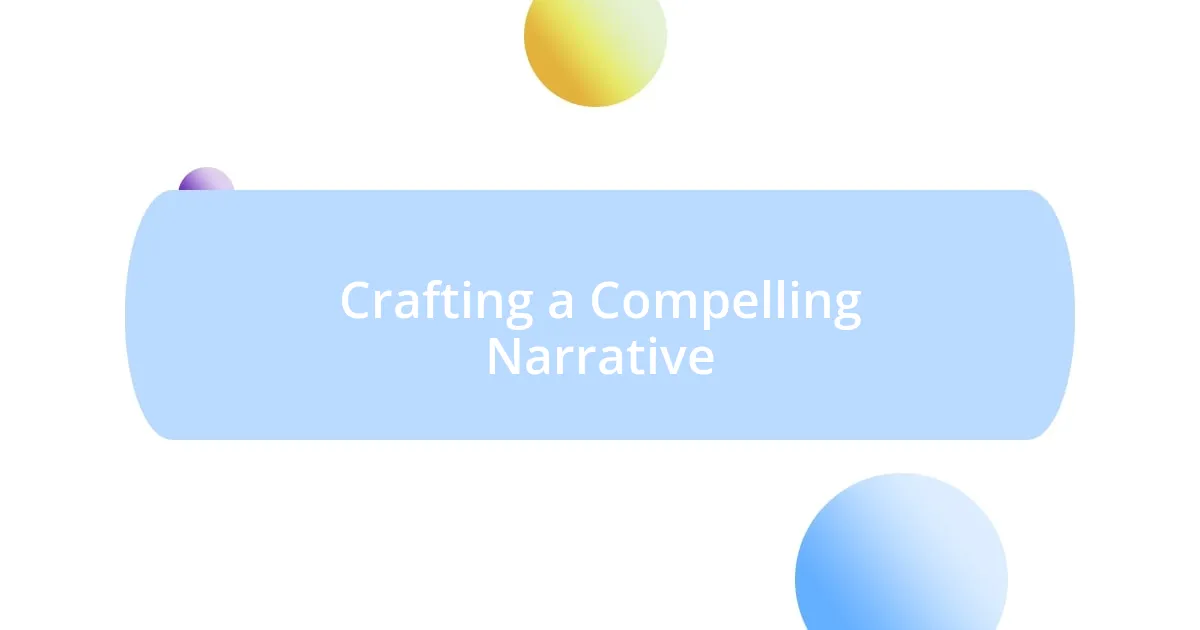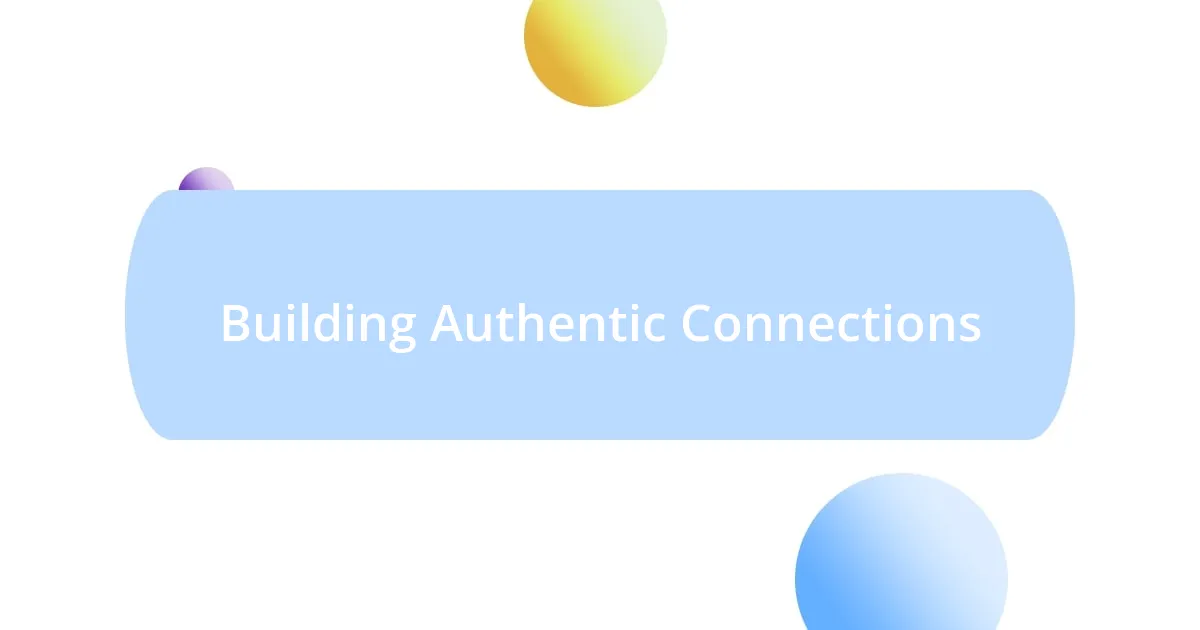Key takeaways:
- Storytelling creates emotional connections, inviting audiences to engage with personal narratives rather than just facts.
- Identifying your target audience through demographics, surveys, and relationship-building helps tailor compelling narratives.
- Incorporating suspense, diverse perspectives, and a clear call to action enhances engagement and inspires donors to contribute.
- Utilizing multiple channels for storytelling, combined with consistent messaging, fosters deeper connections and encourages donor loyalty.

Understanding the Power of Storytelling
Storytelling is a remarkable tool that taps into the emotions of the audience, creating deeper connections than mere facts ever could. I remember a time when I shared a heartfelt story about a community member who overcame immense hardship through our organization’s support. The way their eyes lit up during the presentation reminded me of how impactful sharing genuine experiences can be.
Have you ever noticed how a well-told story can transport you to another person’s world? When I narrated the journey of a young girl whose education was transformed by donor contributions, I could feel the emotion in the room change. It was as if everyone was not just hearing about her struggles and triumphs but were on that journey with her.
The essence of storytelling lies in its ability to make people feel, and that’s where true resonance happens. I find that when I weave personal narratives into our mission, I don’t just present opportunities for giving; I invite others to become part of a larger story. This isn’t just about numbers or statistics—it’s about engaging the heart and forging a meaningful connection that inspires action.

Identifying Your Target Audience
When I first began crafting narratives to attract donors, I realized that understanding who I was speaking to was crucial. I spent time researching and engaging with potential supporters, which illuminated their values and interests. This process helped me tailor my stories to resonate with them on a personal level.
Here are some key ways to identify your target audience:
- Analyze Demographics: Look at data such as age, gender, income level, and education to find commonalities among your potential supporters.
- Conduct Surveys: I’ve often found that directly asking people what they care about opens doors to deeper insights that can shape your storytelling.
- Leverage Social Media: Platforms like Facebook and Instagram provide a wealth of information about audience interests and engagement patterns.
- Build Relationships: Conversations with volunteers or past donors can reveal what motivates people to give and what stories they connect with most.
- Focus on Values: Understand the core values of your audience; this guides how you frame your narratives to align with their beliefs.
By honing in on the wants and needs of your audience, I’ve discovered that storytelling becomes not just an art, but a personalized journey that invites them along.

Crafting a Compelling Narrative
Crafting a compelling narrative involves weaving together facts, emotions, and a clear purpose. I recall a moment when I posted a short video featuring stories from the volunteers who witnessed firsthand the changes in the community. It turned out that their authentic voices added layers to our message, making it feel less like a pitch and more like a heartfelt conversation. When you involve diverse perspectives in your stories, it amplifies the emotional impact, enhancing how audiences connect with your cause.
As I delved deeper into storytelling, I learned that creating suspense or an unexpected twist could keep the audience engaged. One time, I shared a seemingly typical story about a family facing food insecurity, but halfway through, I revealed that they had a unique dream of starting a small business. This pivot not only captured the attention of the listeners but also highlighted the importance of supporting the community in a multifaceted way. By strategically crafting your narratives, you not only maintain interest but also invite supporters to envision the broader possibilities their contributions could help create.
Finally, I’ve found that incorporating a call to action at the end of my narratives is crucial. It’s like closing a book with an open door, prompting listeners to consider their role in the story. I distinctly remember a fundraising event where I shared an inspiring tale of resilience and ended with an invitation to help that same community thrive. It transformed listeners from passive observers into active participants, illustrating how a well-crafted narrative can ignite a sense of urgency to contribute.
| Key Elements | Description |
|---|---|
| Emotion | Capturing the audience’s feelings through personal stories. |
| Engagement | Using suspense or unexpected twists to maintain attention. |
| Call to Action | Encouraging the audience to participate in the narrative. |

Utilizing Emotional Appeals Effectively
Utilizing emotional appeals is like tapping into a treasure trove of connection. I remember a time when I shared a heartfelt letter from a recipient who had benefited from our program. It wasn’t just words on a page; it was a direct line to the donor’s heart. When presenting real emotions and personal stories, donors don’t just learn about the issues; they feel the urgency and passion that drive our mission.
Have you ever felt moved by a story that mirrored your own experiences? I recall one evening at a gala where I spoke about a local child overcoming challenges with the community’s support. As I related his journey, I could see heads nodding and eyes glistening. This shared emotional experience compelled many to open their wallets that night. It reinforced my belief that connecting through genuine emotions creates an impact far beyond statistics and facts.
It’s essential to strike a balance between storytelling and evoking empathy. I’ve had my share of attempts that missed the mark, where the narrative felt forced or detached. Yet, those lessons were invaluable. I learned that when I allow vulnerability into my storytelling, I invite donors to relate not just to the cause, but to each other. Isn’t that what drives us all—to feel seen, heard, and moved to action?

Building Authentic Connections
Building authentic connections starts with showing people the heart behind your cause. I once hosted a small gathering with prospective donors, where I chose to share not just statistics but real stories from individuals who had been directly impacted by our work. One story was about Maria, a single mother who had transformed her life through our program. As I recounted her struggles and triumphs, I could almost feel the room shift. Faces leaned in, and I knew they were envisioning Maria’s journey—this connection felt deeply personal and immediate.
What if I told you that sharing flaws or challenges can deepen those connections? In a recent presentation, I dared to discuss our setbacks—the moments things didn’t go as planned. While it felt risky, people responded with empathy. I noticed several nods of understanding; they appreciated that we were all human and faced hurdles. This honesty bridged the gap, enriching the narrative and allowing the audience to relate to us more readily. Isn’t it fascinating how vulnerability can build a bridge instead of a barrier?
Lastly, I’ve found that asking for feedback during storytelling enriches the connection even further. After a workshop, I opened the floor for questions and thoughts. It was enlightening to hear how our stories resonated differently with everyone. One donor shared how a certain event reminded them of a personal experience, instantly drawing them closer to our mission. By cultivating this dialogue, I not only foster genuine relationships but also spark deeper involvement—it’s all about creating that sense of belonging. Wouldn’t you agree that connection is forged in the shared experience?

Engaging Donors Through Multiple Channels
Engaging donors through multiple channels has been a game-changer for me. I discovered early on that a single email wasn’t enough; I needed to reach out via social media, newsletters, and even in-person events. I vividly remember a campaign where I combined heartfelt videos on our social platforms with detailed blog posts that shared behind-the-scenes stories. The response was overwhelming—donors started engaging more because they were able to connect with our work on various levels. Have you tried diversifying your outreach? It opens up a world of possibilities.
I enjoy using different formats to create a richer storytelling experience. At one point, I organized a webinar where we showcased our impact through a live panel with beneficiaries. Hearing their voices made the stories come alive in a way that written words struggled to convey. It was incredible to watch donors react in real time, their comments pouring in as they were moved by what they heard. That direct interaction not only strengthened existing relationships but also pulled in new supporters. Isn’t it amazing how different channels can amplify the same message?
What resonates with me the most is the importance of consistency across these channels. I once ran a campaign that used the same theme—”Every Story Matters”—across email blasts, social media, and community events. It reinforced our mission and kept us top-of-mind for potential donors. I found that repetition, when it’s coupled with authenticity, allows the message to penetrate deeper. By ensuring that each interaction felt cohesive yet personal, I could create a sense of continuity in our storytelling. Don’t you think that consistency in messaging can strengthen donor loyalty?














